type wire rope in stock
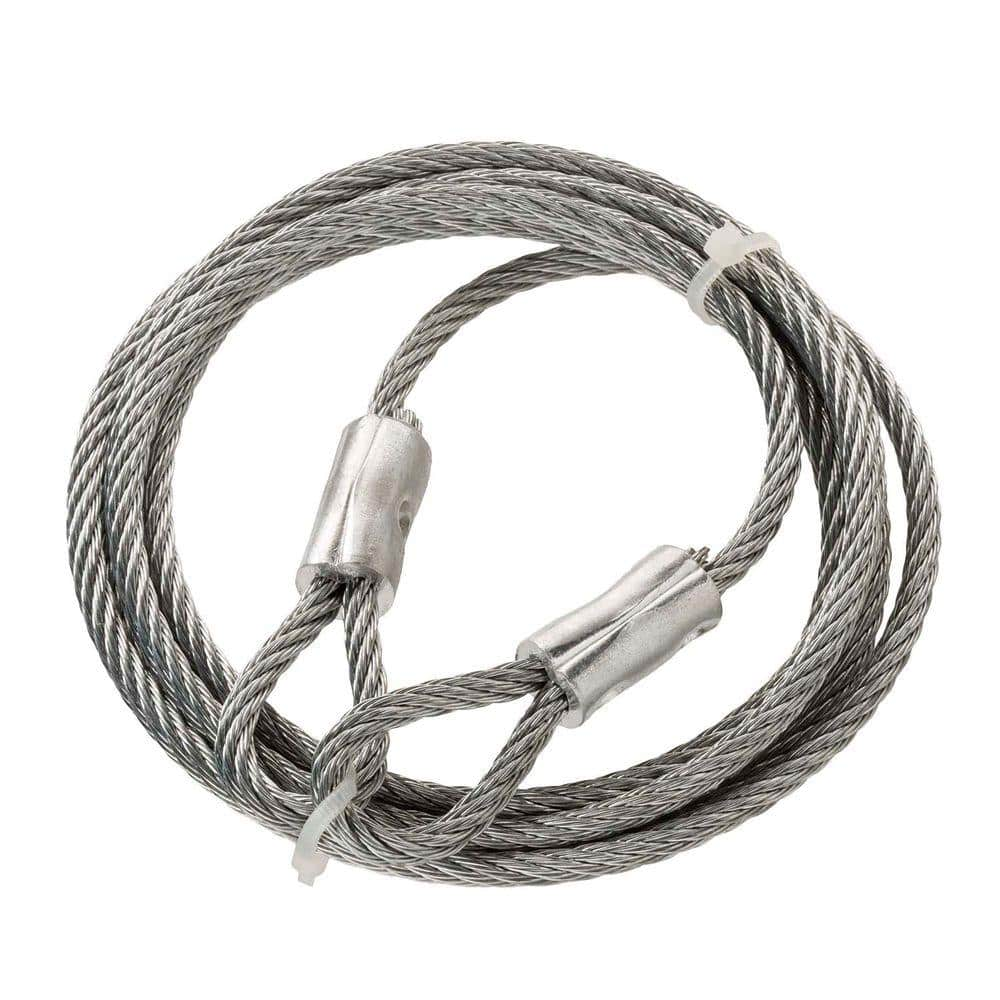
The standard Wire Rope for the Steel fabricating industry is 6 x 19 EIP/IWRC. In short this means the wire rope is made up of 6 independent wires. Each of these 6 wires has 19 individual strands.
The illustration below shows the configuration of standard Wire Rope in Classification 6 x 19 IWRC / EIP. IWRC refers to the inner core strand, which is independent of the 6 outer strands.

Wire rope is technically defined as multi-wire strands laid geometrically around a core while also used more generally as a term to classify multiple product families including aircraft cable, coated aircraft cable, general purpose wire rope, strand, rotation resistant wire rope, compacted/swaged wire rope, and cable laid wire rope.
Aircraft cable does not fit the definition of wire rope in the strictest sense as it does not have an independent core, but rather a strand core, in which the center is one of the strands that is laid with the outside strand layers. Aircraft cable is available in diameters 3/8" or less with breaking strengths similar to that of equal diameter independent wire rope core (IWRC) and is available in stainless steel and galvanized steel.
Wire rope can be galvanized via three processes. Listed from least corrosion-resistant to the most corrosion-resistant, they are electro-galvanizing, hot-dip galvanizing, and drawn-galvanizing. In addition to being the most corrosion-resistant types of galvanized wire rope, drawn-galvanized has another added benefit which is a breaking strength that is the same as bright wire rope does. Electro-galvanized and hot-dip galvanized wire rope have breaking strengths that are approximately 10% lower.
Wire rope is specified by the number of strands in the rope, the number of wires in each strand, and a description of the core’s material of construction. For example, the notation “6x7 FC” means that the rope has six strands with seven wires in each strand and a fiber core. Commonly used core designations include FC (fiber core), independent wire rope core (IWRC), wire strand core (WSC), and poly core (PC).
There are two elements to wire rope lubrication, the core, and outer strands. IWRC wire rope always has a lubricated core (unless specially ordered as otherwise). Bright wire rope always has lubricated outer strands. Galvanized wire rope can be manufactured in either dry finish or lubricated with respect to the outer strands. Typically stainless steel wire rope is manufactured with a lubricated IWRC and dry finish outer strands.

Stainless Steel Wire Ropes are an important part of our core product range. We keep stock of AISI 316 Marine Grade Stainless Steel Wire Rope from 0.5mm up to 26mm in various constructions including: 1X19, 7X7, 7X19 and 6X36 wire core.
Providing high quality materials is an extremely important part of our ethos which is why our stainless steel wire ropes are produced in accordance with BSMA29 standards by one of the leading stainless steel wire rope manufacturers in the world.
Our ropes are used in demanding conditions and it is therefore vital that the tolerance and chemical composition of the material is as per the required AISI 316 requirements. Applications and markets include:structural and architectural, balustrade, yacht rigging and Stay Wire applications.
Steel Wire Rope Ltd have specialised in supplying multi stranded galvanised steel wire rope since 1989. We stock from 0.5mm up to 64mm in various constructions including 1X19, 7X7,6X19, 7X19, 6X36, 8X19, 8X36, 19X7 and 35X7 with both Fibre Core and Steel Cores. In addition to these conventional steel wire ropes we can offer special wire ropes from high quality manufacturers.
Most wire ropes operate in demanding conditions and must resist crushing, bending fatigue and abrasion. We recognise that it is vital that all of our wire ropes need to perform to the highest levels to maximise service life therefore increasing productivity for the end user. With our technical experience we have worked hard with our partners to ensure that all material is manufactured to the very best standards in the steel wire rope industry.
Each steel wire rope can be supplied fully assembled complete with end terminals such as a thimble eyes, swaged ends and wedge sockets as well as many other solutions. These cable assemblies are manufactured in house by our team of engineers complete to your specifications.
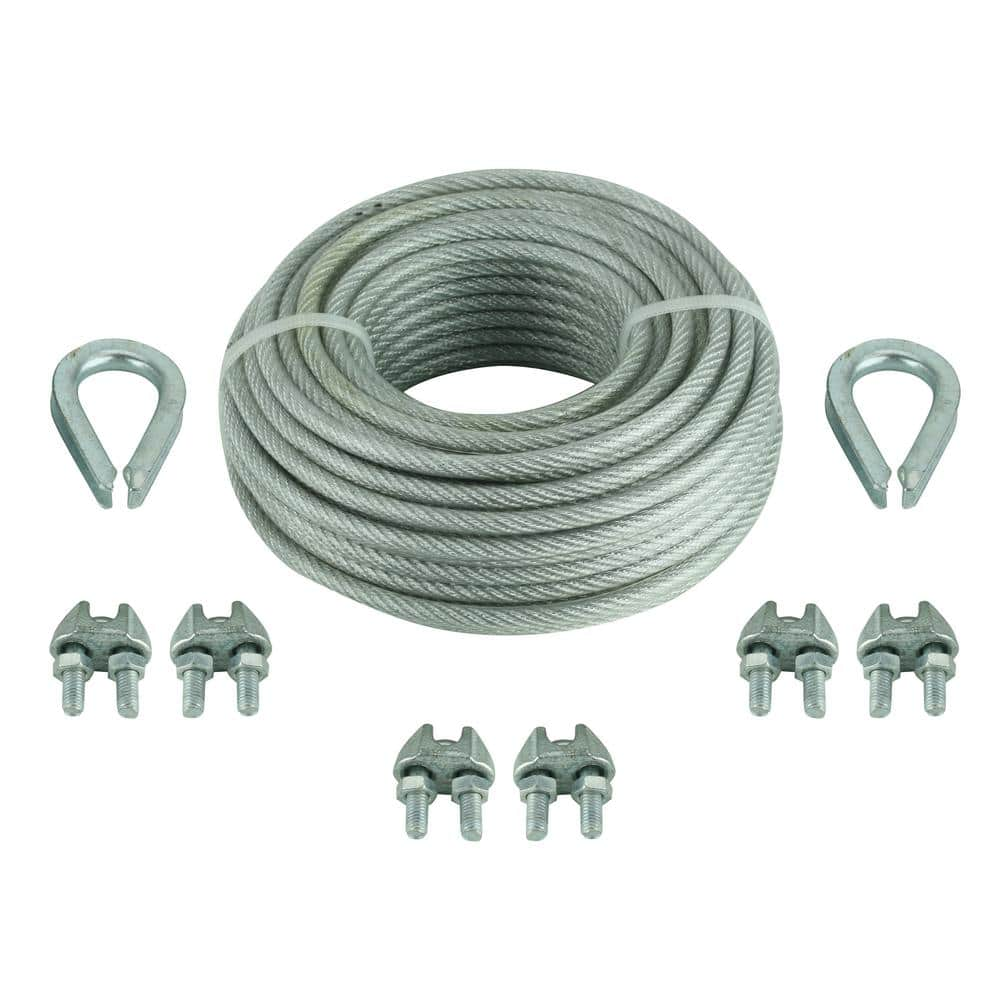
HSI is a leader in the wire rope manufacturing industry. Since 1930 when founder Ted Hanes began splicing wire rope for local contractors in Buffalo, we have been dedicated to constructing the highest quality wire rope available.
Wire rope is a durable piece of machinery consisting of several multi-wired strands wrapped around a central core. It is ideal for indoor and outdoor environments, as an incredibly strong and durable rope with resistance to environmental hazards like water, sunlight, heat, and chemicals.
Wire rope consists of a core around which a number of multi-wired strands are “laid” or helically bent. There are two types of cores for wire rope: fiber and wire cores. Fiber cores are made of synthetic fibers, while wire cores are either an Independent Wire Rope Core or a Strand Core. The core provides support and maintains the position of the outer strands during operation.
Any number of multi-wired strands can be laid around the core. The most common arrangement is six strands around the core, as this construction gives the best balance of positive attributes. In general, ropes constructed with more wires have increased flexibility, while ropes constructed with fewer wires have superior resistance to abrasion.
The size, grade, and construction of wire rope needed should be considered when choosing a rope for your application. To learn more about selecting the correct wire rope, wire rope design factors, and to see a comprehensive overview of wire rope, see our Wire Rope Information page.
If you have questions about which wire rope is best suited for your job, please call our product experts at 1-888-426-3755 and we will be happy to advise you on a solution.
HSI standard wire ropes come in a full range of sizes, grades, and constructions. The most common classifications for standard wire rope are 6x7, 6x19, and 6x37. They may be ordered in bright or galvanized finishes, IPS and EIPS grades, right or left lay, and regular lay or lang lay.
While all wire ropes are constructed of multi-wired strands wrapped around a core, cable laid wire ropes take this construction a step further, wrapping several wire ropes, each with their own core, around a central wire rope. This results in a rope constructed with very small wires in reference to its finished nominal dimension which will offer greatly improved flexibility and kinking resistance.
Compact wire rope consists of wire rope strands that have been compacted to reduce the diameter of the strand and increase its density. The resulting rope has superior strength and abrasion resistance compared to standard wire rope, as well increased lateral compression strength. Typical applications for compact wire rope include crane lines, as compact rope can more easily fit into a sheave; and logging applications.
Extra high strength and corrosion resistant galvanized guy strand cable is an extremely sturdy wire rope used to hold structures in place in the construction and transmission industries, as well as a safety barrier cable and guard rail strand. Typical applications include telephone poles and other positioning applications where a sturdy and non-flexible rope is needed.
Commercial grade galvanized aircraft cable is a general purpose wire rope that is used in many industries for its increased corrosion resistance and strength. The galvanized coating on this wire rope provides lubrication while adding a protective layer against abrasive environments. Contrary to its common name, aircraft control cable, commercial grade GAC cannot be used in aircraft control applications.
Rotation resistant wire ropes are constructed with outer strands twisted in the opposite direction of the inner strands, causing the layers to counteract each other’s twist. This prevents rotation of the load during applications where precise lifting or positioning is required. Rotation resistant ropes are available in a full range of sizes, grades and constructions. Swivels are not recommended for use with rotation resistant wire rope.

Fortune Rope has wire rope in stock and available for immediate delivery in 6x19 Class (wire rope having 15 through 26 wires per strand), and 6x37 Class (wire rope having 27 through 46 wires per strand); both classes are available in fiber core and IWRC (Independent Wire Rope Core) types. The 6x19 Class of wire rope ranges in diameters from 1/4" to 1-1/4", with a breaking strength (tensile strength) from 2.74 to 69.4 tons. The 6x37 Class of wire rope ranges in diameters from 1/4" to 1 and 1/4", with a breaking strength (tensile strength) from 2.74 to 69.4 tons.
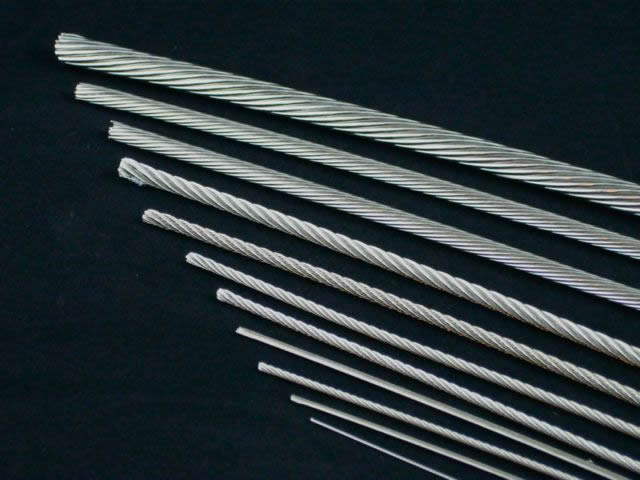
Type 302/304 stainless steel is the standard alloy for use in wire rope and cable. It has about the same strength as galvanized rope or cable but is much more corrosion resistant. It can be used in most industrial atmospheres and has acceptable corrosion resistance when used in marine- and salt water.
Type 316 stainless steel is the standard high corrosion resistant steel for rope and cable. It is resistant to many chemicals in the pulp and paper, photographic, food processing and textile industries. It has the best pitting resistance in marine and salt water and can be used in temperatures up to 480°C (900°F).
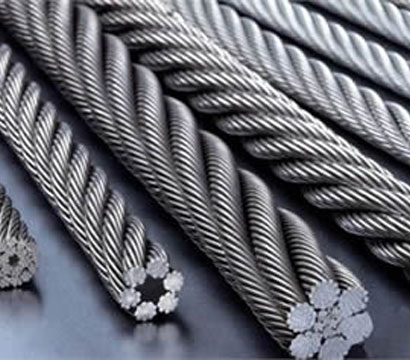
In this full length handbook, learn the basics of wire rope including how to choose and measure wire rope. Additionally, you will understand the fundamental mechanics behind our most popular rope constructions and classifications. Finally, you will learn the proper way to care for and use your wire rope, including end treatments, inspection, and removal criteria.
Twisted hoist lines can bring a construction project to a sudden halt, resulting in downtime. But the good news is that you can minimize block rotation through proper installation, handling and corrective measures. In this reference document, you will better understand torque and gain tips on how to reduce block rotation.
Our galvanized strand products meet or exceed ASTM specifications A475 and ASTM A363. In this reference document (an excerpt from the Wire Rope Users Handbook), you will learn what the strands are tested for. Additionally, a chart detailing the physical properties of zinc-coated steel wire strand is included.
Our industry has its fair share of terminology and phrases. In this reference document (an excerpt from the Wire Rope Users Handbook), you will be provided a comprehensive glossary of all Wire Rope words. From “Abrasion” to “Warrington”, your questions are answered here.
How long will your rope last? While there is not a simple answer, there are several factors involved. In this reference document (an excerpt from the Wire Rope Users Handbook), you will the factors affecting the longevity of your ropes life. Additionally, information regarding the cleaning and lubrication of your ropes is included.
There is a correct methodology behind measuring of wire rope diameter. Learn this methodology in this reference document (an excerpt from the Wire Rope Users Handbook). Also, the definition of design factor is available. And finally, detailed information regarding metric conversion and equivalents is included.
Yes, there is a RIGHT way to unreel, uncoil and store a wire rope. Learn the proper steps in this reference document (an excerpt from the Wire Rope Users Handbook). Additionally, the three stages of kinking are vividly displayed.
Wires are the basic building blocks of a wire rope. And, a rope core will greatly impact the performance of your rope. Learn how the number of wire strands and construction determine a wire rope classification. In this reference document (an excerpt from the Wire Rope Users Handbook), you will become familiar with the standard rope classifications and special rope constructions.
The types of wire, lay and performing greatly affect wire rope performance and operation. In this reference document (an excerpt from the Wire Rope Users Handbook), you will learn the basic types of wire used in ropes, the common grades of wire rope and the meaning of “lay”.
In this Product Bulletin, you will learn about the new rope description format that WireCo WorldGroup will follow in all of our product descriptions. This format will adopt symbols and designations that are part of ISO, ASTM, and other industry standards and specifications.
Rotation-resistant ropes can frequently provide the best and most economical service in specific applications, when you choose, handle and use them properly. In this reference document (an excerpt from the Wire Rope Users Handbook), you will learn the difference between Category 1, Category 2 and Category 3 Rotation-Resistant Rope.
Previously known as “aircraft” cable, and now known as “utility cable, these small diameter specialty ropes are used in a variety of applications, including control cables, window and door closures, different kind of remote control systems and boat riggings. In this reference document (an excerpt from the Wire Rope Users Handbook), you will learn how Union specialty small ropes are engineered and fabricated, and the special lubrication and testing they require. Additionally, a minimum breaking force and weights for 7x7, and 7x19 utility cable is included.
Our industry has its fair share of abbreviations. In this reference document (an excerpt from the Wire Rope Users Handbook), you will be provided a comprehensive glossary of all Wire Rope words. From “PRF” (preformed) to “XIP®” (Extra improved plow steel), your questions are answered here.
Swaged ropes and “Double-Swaged” ropes provide excellent strength for some specific applications. In this reference document (an excerpt from the Wire Rope Users Handbook), you will find the definition of swaged and PowerFlex (aka double-swaged) ropes. Minimum breaking force and weights charts for 6x19, 6x36, PowerFlex, 3x19 and 3x36 ropes are included.
Our most popular Tech Report, this Wire Rope Inspection Tech Report explains why periodic inspection of wire ropes are necessary. Learn how to properly inspect wire rope, what tools are necessary for inspection, and how to use inspection forms. Additionally, you will learn how often you should inspect your wire rope, what your ‘critical’ points are, how to inspect your end attachments, how to make an internal rope examination, how to inspect sheaves, and how to evaluate drums. Finally, you will understand how to properly measure rope diameter and rope lay.
In applications where a specific length is critical, the constructional stretch can be minimized by prestretching the rope prior to installation, HOWEVER, learn why WireCo WorldGroup advises against prestretching Tuf-Kote/PFV rope. After reading this product bulletin, you will understand the rationale behind WireCo WorldGroup’s recommendation against prestretching Tuf-Kote/PFV Rope.
Engineering and producing wire rope slings for your application is a highly specialized field - with exacting standards that we gladly live by. In this marketing flier, learn the different Union Wire Rope Sling constructions. Additionally learn more about Union Spelter Sockets (both open and closed). There are capacity and diameter charts associated with each product.
In this Product Bulletin, learn the various definition of "US made wire rope" including references to the Buy American Act and the Buy America Requirement. Additionally, learn how Union wire rope meets these definitions.
Most ropes are shipped with the ends seized as they are prepared for cutting, however, in some cases, the rope requires special end preparations. In this reference document (an excerpt from the Wire Rope Users Handbook), you will learn the two chosen methods for seizing cut ends of your wire ropes. Illustrations and step-by-step instructions are included.
All wire ropes will wear out eventually and gradually lose work capability throughout their service life. In this reference document (an excerpt from the Wire Rope Users Handbook), you will learn why periodic inspections are critical. The purposes for inspection, guidelines around timing and choosing the right person to inspect are included. Additionally, illustrations regarding “what to look for” in a wire rope is available.
There is obvious evidence of wire rope wear and abuse, and specific criteria regarding removal of your wire rope. In this reference document (an excerpt from the Wire Rope Users Handbook), you will learn the various types of wear and abuse (illustrations included) and the exact removal criteria. A chart on when to replace your wire rope – based on number of broken wires is included.
In this product bulletin, learn why WireCo WorldGroup refers to XLT4 as a low-torque rope and not a rotation-resistant rope. Also included are the definitions of ASTM A1023 and ASME B30.5.

Super high strength yet super flexible overhead crane wire rope. Used as original equipment rope and for crane capacity upgrades. Also used as high strength engineered assembly cable for tension applications. Type V has little to no initial constructional stretch.
Power 9 V is compacted to enhance the abrasion characteristic and to reduce sheave- and drum wear. Type Power-9V in combination with EEIPS (2160 N/mm2) wire tensile grades increases rope strength of up to about 50% over regular strength 6-strand types.
Power-9 is constructed from a total of up to 358 single wires compared to 265 single wires in traditional 6x36 wire rope. This results in a super strong yet super flexible rope.
Although Power-9 is our most successful high strength rope construction there are precautions we must address before you select this rope. One is that the direction of lay which must correspond to drum grooving, the other is that large fleet angles may cause high strands or core protrusion because the rope will ‘roll’ rather than ‘glide’ into the sheave groove. Any introduction of torque into (any) wire rope will cause structural damages.
Note: The maximum CAPACITY, WORKING LOAD LIMIT (WLL), or LINE PULL of the rope usually is 1/5 of the below stated values. For specific information consult the standards applicable to your rope application.
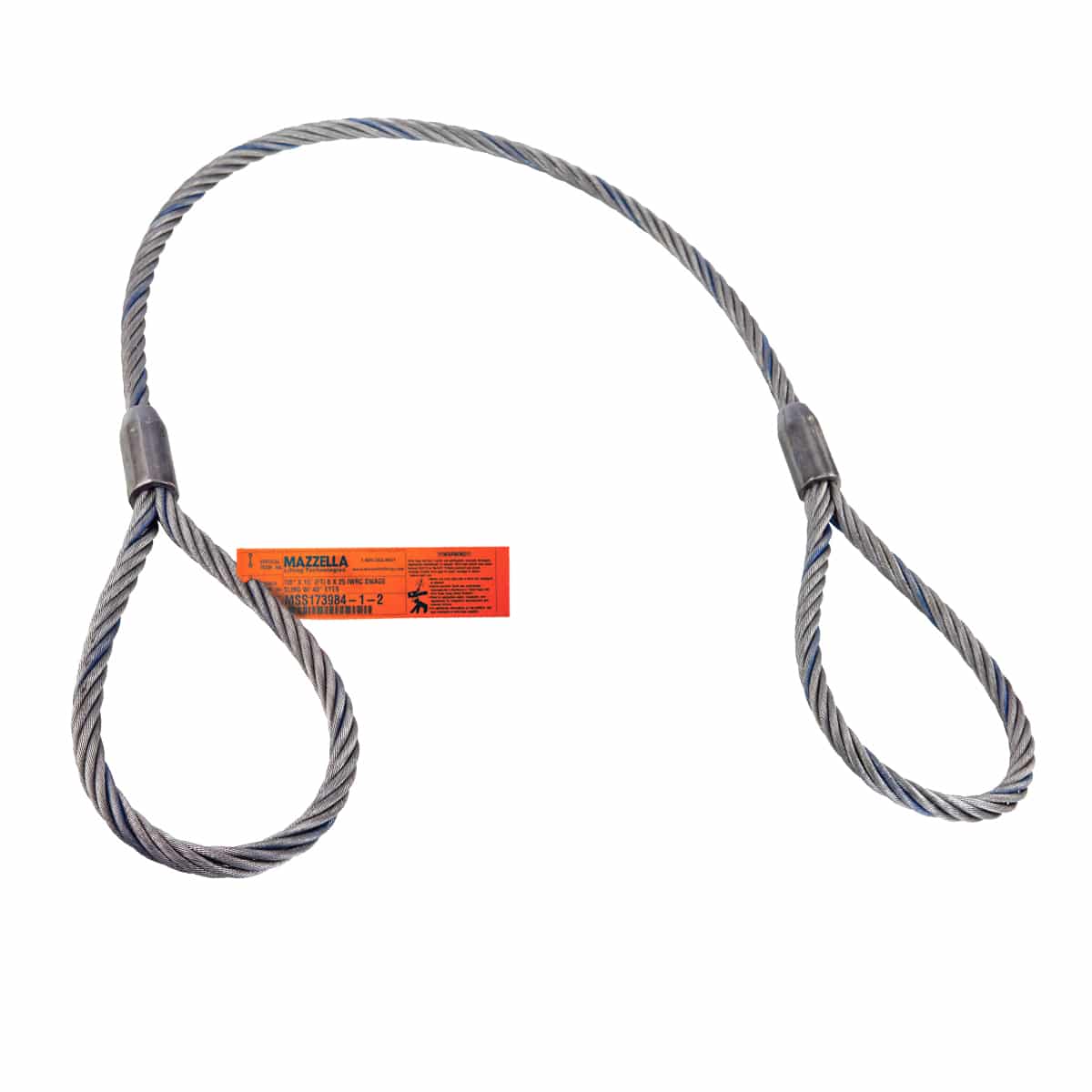
Wire rope and cable, is there a difference? The terms are often used interchangeably, but are they different? Each is considered a machine. Wire ropes are usually ⅜” in diameter or larger, while cables or cords are smaller. Though this little distinction exists in aircraft and marine cables, wire ropes and cables are synonymous in most other ways.
A strand is made up of two or more wires twisted around a center wire. Each strand is made up of 7, 19, or 37 wires. Cable or wire rope is made when a group of strands is twisted around a center wire or rope. They are named for the numbers of wires and strands. A 7×7 cable has 7 strands with 7 wires in each strand wrapped around a central core. A 7×19 cable would include 7 strands with 19 wires in each cable.
Different wire rope applications require different demands for abrasion, strength, and corrosion resistance. Different materials are used to meet different needs. Sizes under ⅜ “ are considered aircraft cable, sizes over 3/8 “ in diameter are considered wire rope.Stainless Steel – Type 302, made up of 18% chromium and 8% nickel alloy, is the most common grade because of its high strength and resistance to corrosion. When non-magnetic properties are required, type 305 is employed. Other common types used in wire rope are 304, 305, 316, and 321. Each has specific advantages and disadvantages. Stainless steel is the stronger of the two, so its cost is higher but well worth it.
Galvanized Carbon Steel – To protect from the elements, a coating of zinc is applied to wire ropes used in the making of this wire rope. It is the wire rope of choice when strength is necessary, but corrosion resistance is not significant enough to warrant the use of stainless steel. Galvanized carbon steel is the go-to for cost-effectiveness.
If you require flexibility, you need wires that have more strands, more strands equal more flexibility. Look for 3×7, 7×7, and 7×19; these will give you more flexibility. However, as the degrees of flexibility increase, the abrasion resistance decreases. These cables are most useful where you require continuous flexing. Basic cable construction:
It is essential to correctly estimate the qualities necessary for the work the wire rope will be doing. To decide the importance of the essential attributes to do the job, you need to look for quality and figure out whether it can withstand how it will be used and the length of time it can be used in this capacity. In choosing a wire rope for the job at hand, these four things must be considered:Sufficient strength to lift the load and then some, keeping safety in mind. Always overestimate.
Whether it is a crane, a pulley, or some other machine, be sure to choose the proper size, construction, and grade of wire rope appropriate for the job.
To find the wire rope or cable you need for the job, contact us atSilver State Wire Ropefor all of your wire rope and rigging needs. We have all sizes of cable and wire rope; whether you need it for aircraft, marine, or land use, we have it all!




 8613371530291
8613371530291